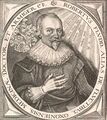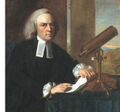Template:Selected anniversaries/December 19: Difference between revisions
No edit summary |
No edit summary |
||
| Line 7: | Line 7: | ||
||1752: François Isaac de Rivaz born ... inventor and a politician. He invented a hydrogen-powered internal combustion engine with electric ignition and described it in a French patent published in 1807. In 1808 he fitted it into a primitive working vehicle – "the world's first internal combustion powered automobile". | ||1752: François Isaac de Rivaz born ... inventor and a politician. He invented a hydrogen-powered internal combustion engine with electric ignition and described it in a French patent published in 1807. In 1808 he fitted it into a primitive working vehicle – "the world's first internal combustion powered automobile". | ||
||1765: Joseph Priestley, visiting in London, is introduced to Benjamin Franklin, and other members of the "Honest Whigs" by John Canton in a popular coffee house in the shadow of St Pauls cathedral. Priestly had presented himself to Canton with a letter of introduction from Priestley's friend and rector at Warrington Academy that read, "You will find a benevolent, sensible man, with a considerable sense of learning. If Dr. Franklin be in Town,I believe Dr. Priestley would be glad to be made known of him." Before the night was over, Priestly had acquired their support for a book about their mutual efforts in the discovery of electricity. https://pballew.blogspot.com/2018/12/on-this-day-in-math-december-19.html | |||
||1852: Albert Abraham Michelson born ... physicist, chemist, and academic, Nobel Prize laureate. | ||1852: Albert Abraham Michelson born ... physicist, chemist, and academic, Nobel Prize laureate. | ||
| Line 15: | Line 17: | ||
||1887: Balfour Stewart dies ... physicist. His studies in the field of radiant heat led to him receiving the Rumford Medal of the Royal Society in 1868. | ||1887: Balfour Stewart dies ... physicist. His studies in the field of radiant heat led to him receiving the Rumford Medal of the Royal Society in 1868. | ||
||1894L Karl Pearson introduced the Pearson family of densities. [Springer’s 1985 Statistics Calendar] *VFR https://pballew.blogspot.com/2018/12/on-this-day-in-math-december-19.html | |||
||1900: Margaret Brundage born ... illustrator, known for illustrating pulp magazine ''Weird Tales''. | ||1900: Margaret Brundage born ... illustrator, known for illustrating pulp magazine ''Weird Tales''. | ||
| Line 41: | Line 45: | ||
File:John Bodkin Adams 1940s.jpg|link=John Bodkin Adams (nonfiction)|1956: Physician, confidence trickster, and suspected serial killer [[John Bodkin Adams (nonfiction)|John Bodkin Adams]] is arrested in connection with the suspicious deaths of more than 160 patients. Eventually he is convicted only of minor charges. | File:John Bodkin Adams 1940s.jpg|link=John Bodkin Adams (nonfiction)|1956: Physician, confidence trickster, and suspected serial killer [[John Bodkin Adams (nonfiction)|John Bodkin Adams]] is arrested in connection with the suspicious deaths of more than 160 patients. Eventually he is convicted only of minor charges. | ||
||1958, the first known radio broadcast from outer space was transmitted. President Eisenhower's voice issued a Christmas greeting from a pre-recorded tape on a recorder aboard an orbiting space satellite. His full message was, "This is the President of the United States speaking. Through the marvels of scientific advance, my voice is coming to you from a satellite circling in outer space. My message is a simple one. Through this unique means I convey to you and all mankind America's wish for peace on earth and good will to men everywhere." The broadcast came from the first experimental satellite, Project SCORE, which had been launched two days earlier. The battery-operated 132 MHz all vacuum tubes transmitter had an 8-W output.*TIS https://pballew.blogspot.com/2018/12/on-this-day-in-math-december-19.html | |||
||1972: Apollo program: The last manned lunar flight, Apollo 17, crewed by Eugene Cernan, Ronald Evans, and Harrison Schmitt, returns to Earth. | ||1972: Apollo program: The last manned lunar flight, Apollo 17, crewed by Eugene Cernan, Ronald Evans, and Harrison Schmitt, returns to Earth. | ||
Revision as of 07:37, 19 December 2018
1601: Mathematician Robert Fludd uses Gnomon algorithm to fight crimes against mathematical constants.
1714: Mathematician, physicist, and astronomer John Winthrop born. He will be one of the foremost men of science in America during the 18th century.
- Rudolph Hell.gif
1901: Inventor and engineer Rudolf Hell born. He will invent the Hellschreiber teleprinter system.
1953: Physicist Robert Andrews Millikan dies. He won the Nobel Prize for Physics in 1923 for the measurement of the elementary electronic charge and for his work on the photoelectric effect.
1956: Physician, confidence trickster, and suspected serial killer John Bodkin Adams is arrested in connection with the suspicious deaths of more than 160 patients. Eventually he is convicted only of minor charges.
2015: Steganographic analysis of still images from the Toledo giant red ball incident video unexpectedly reveals a computer virus which "specifically targets this type of red ball, and undoubtedly caused its erratic behavior."




